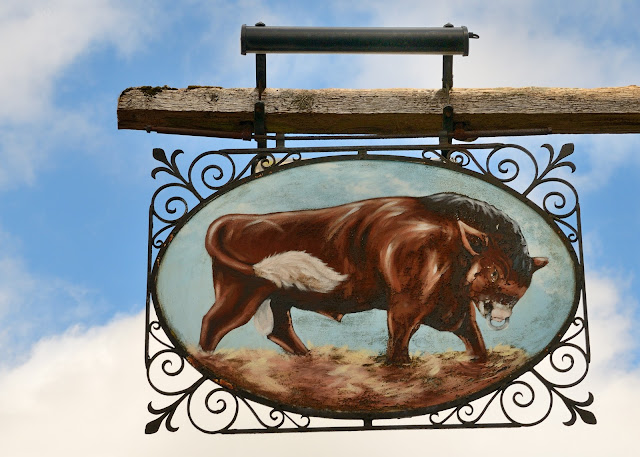Melford with Sudbury Camera Club
On a few dates during the summer months, Sudbury Camera Club members take themselves off to a local spot to wander and see what they can photograph. Today, a few of us headed to the village of Long Melford.
The Bull Hotel is located in the historic village of Long Melford in Suffolk and was built in 1450. This fine timbered building was originally built for one of Long Melford wealthy wool merchants. It was converted into The Bull Inn in 1580. Coaches from London, Bury St Edmunds and Norwich passed through Long Melford. This is obviously the sign, but for some obscure reason I have no pictures of this beautiful building!
The great size and fine architecture of Holy Trinity Church make it unusual for a village parish church. The church dates from the reign of Edward the Confessor; it was then substantially rebuilt between 1467 and 1497 by John Clopton of Kentwell Hall. It is one of the richest "wool churches" in East Anglia and is renowned for its flushwork, Clopton chantry chapel and the Lady Chapel at the east end with some surviving medieval stained-glass. Edmund Blunden, the World War I poet, is buried in the churchyard.
The tomb of William Clopton, father of John Clopton.
A church is recorded as having been on this site since the reign of King Edward the Confessor (1042–1066). It was originally endowed by the Saxon Earl Alric.
The Hare Window.
This unique small stained–glass medieval roundel is located above the north door of Holy Trinity Church in Long Melford, although similar designs have been found in other parts of the world. Although small it has, throughout the ages, been of enormous importance in the spiritual life of the church. The window depicts three hares but the viewer quickly realises that only three ears can be seen. Due to damage during the Cromwellian era the window has required repair
Local landowner and dignitary, Sir William Cordell, founded ‘The Hospital of the Holy Blessed Trinity’ in 1573. During his lifetime Sir William had been Master of the Rolls, High Steward of Ipswich and, in 1558, Speaker of the House of Commons. Residing in Melford Hall he had been born and raised in Long Melford and as an act of piety he provided these almshouses for some of the poor residents of his home town. He also endowed these almshouses with land and property in the surrounding area to ensure a regular source of income for the ‘twelve brethren’ who qualified to live there.
Honey Fungus - spotted along the main road in the village
Some history: Prehistoric finds discovered in 2011 have shown that early settlement of what is now known as Long Melford dates back to the Mesolithic period, up to 8300 BC. In addition, Iron Age finds were made in the same year, and again were found within the largely central area of the current village.
The Romans constructed two roads through Long Melford, the main one running from Chelmsford to Pakenham. Roman remains were discovered in a gravel pit in 1828, a site now occupied by the village's football club. Roman finds in recent years included complete skeletons, a stone coffin, part of the original Roman Road, complete Samian pottery and a Spartan Sword unearthed in a villager's garden.
In June 2013, some archaeological evidence of a Saxon and Bronze Age settlement in the northern area of the village was discovered by Carenza Lewis and her team from Cambridge University, during a student dig.
The Manor of Melford was given to the Abbey of St. Edmundsbury by Earl Aflric c. 1050. The village is recorded in the Domesday Book of 1086, which lists the manor of Long Melford as an estate of 600 hectares. Long Melford survived the Black Death in 1348-9, and was a brief stop-off in the Peasants' Revolt in 1381. By the early 15th century, the manor of Kentwell belonged to the Clopton family. John Clopton was arrested in 1461 and charged with treason. Clopton was spared execution and he was released and returned to Kentwell. There he organised and largely helped to pay for the rebuilding of the parish church, a notable example of a wool church. During this time the wealth of the parish was increasing, with most of the inhabitants being free men, renting their homes and lands. Guilds were founded, and weaving cloth became a key part of the village's economy.
Following the Dissolution of the Monasteries, Henry VIII granted the manor to Sir William Cordell.











Comments